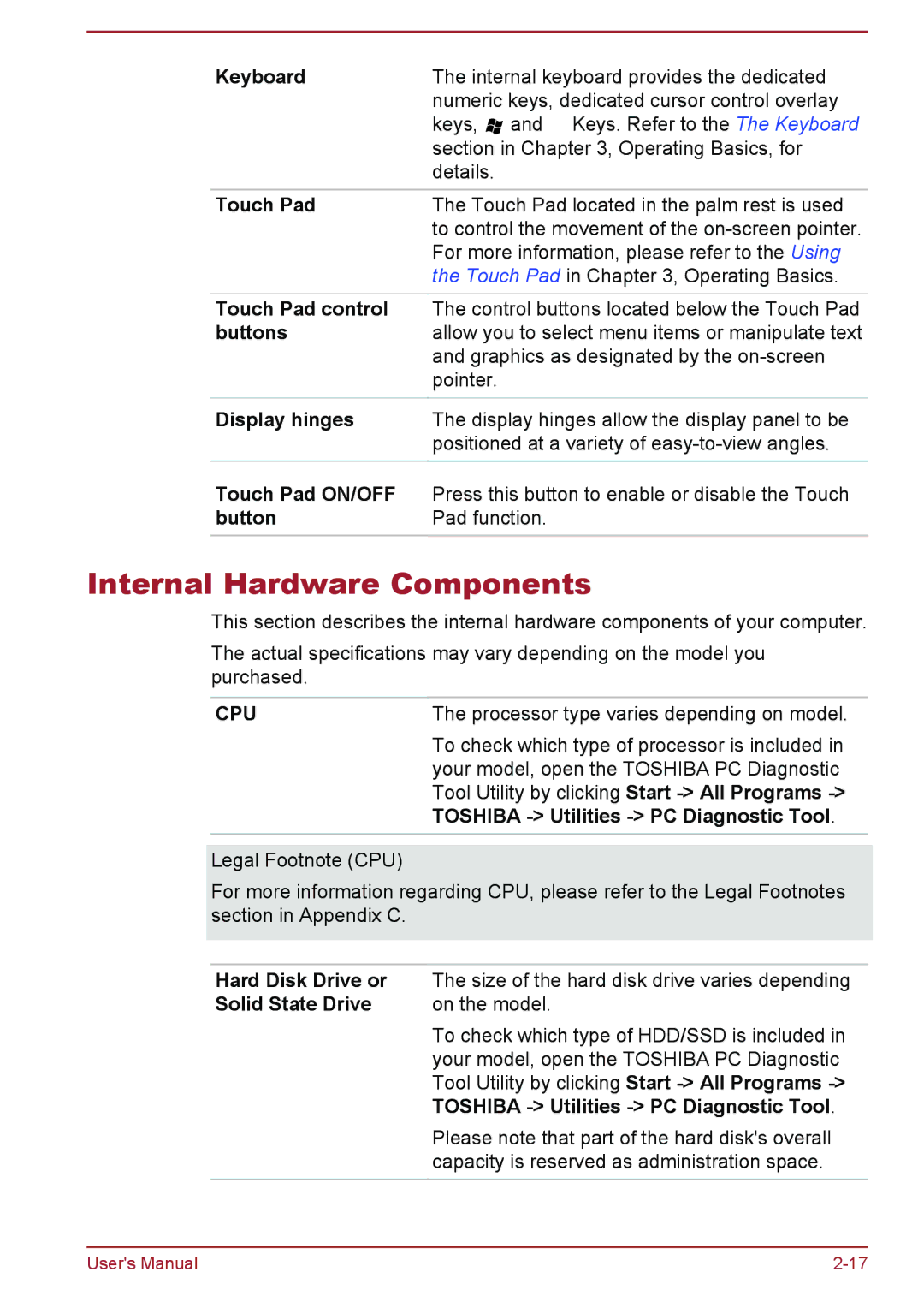
Keyboard | The internal keyboard provides the dedicated |
| numeric keys, dedicated cursor control overlay |
| keys, and Keys. Refer to the The Keyboard |
| section in Chapter 3, Operating Basics, for |
| details. |
|
|
Touch Pad | The Touch Pad located in the palm rest is used |
| to control the movement of the |
| For more information, please refer to the Using |
| the Touch Pad in Chapter 3, Operating Basics. |
|
|
Touch Pad control | The control buttons located below the Touch Pad |
buttons | allow you to select menu items or manipulate text |
| and graphics as designated by the |
| pointer. |
Display hinges | The display hinges allow the display panel to be |
| positioned at a variety of |
Touch Pad ON/OFF | Press this button to enable or disable the Touch |
button | Pad function. |
Internal Hardware Components
This section describes the internal hardware components of your computer.
The actual specifications may vary depending on the model you purchased.
CPU | The processor type varies depending on model. |
| To check which type of processor is included in |
| your model, open the TOSHIBA PC Diagnostic |
| Tool Utility by clicking Start |
| TOSHIBA |
Legal Footnote (CPU)
For more information regarding CPU, please refer to the Legal Footnotes section in Appendix C.
Hard Disk Drive or | The size of the hard disk drive varies depending |
Solid State Drive | on the model. |
| To check which type of HDD/SSD is included in |
| your model, open the TOSHIBA PC Diagnostic |
| Tool Utility by clicking Start |
| TOSHIBA |
| Please note that part of the hard disk's overall |
| capacity is reserved as administration space. |
|
|
User's Manual |
